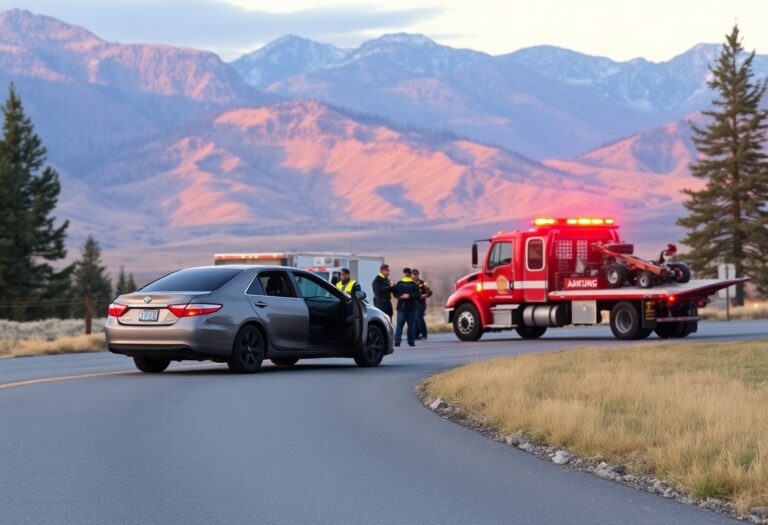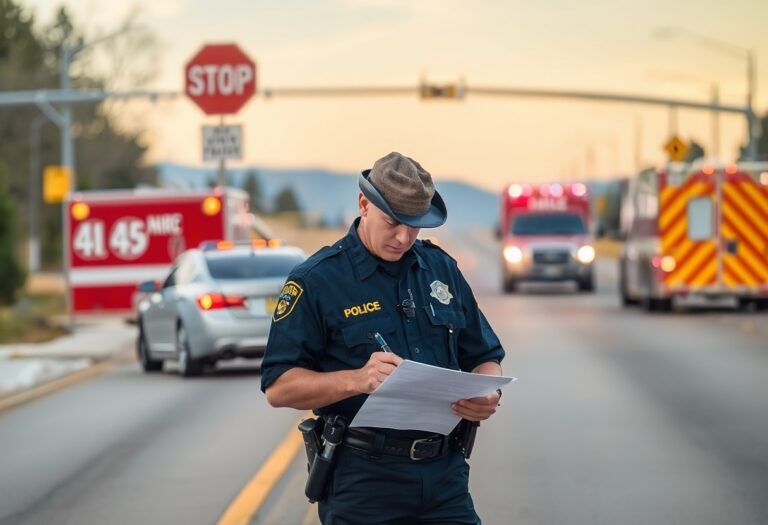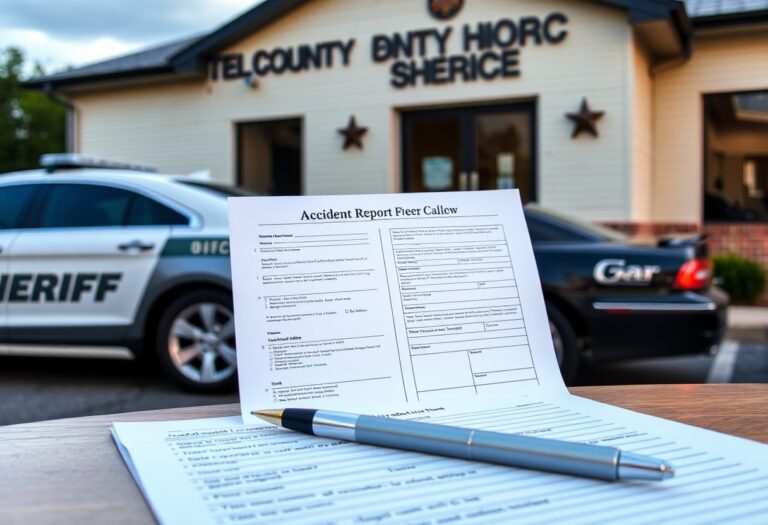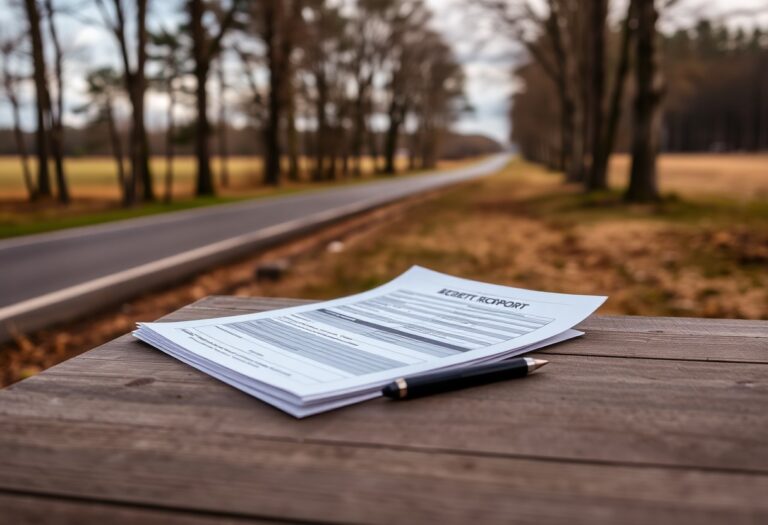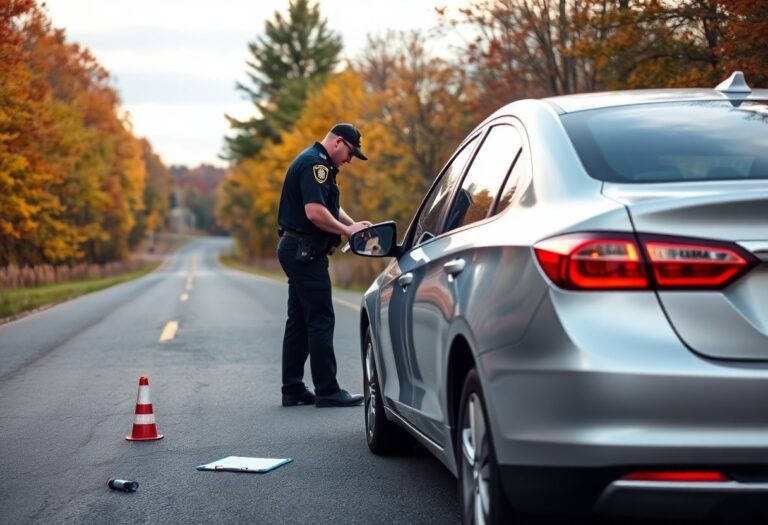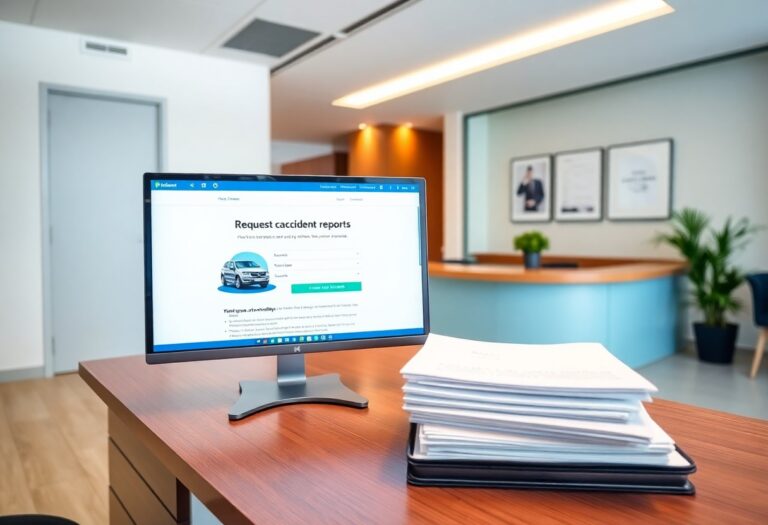There’s a wealth of information you need to understand when it comes to retrieving car accident reports in Hood County, Texas. Whether you’re dealing with insurance claims or legal matters, having access to your report is necessary for protecting your interests. This comprehensive guide will walk you through the step-by-step process of obtaining these reports efficiently, ensuring you have everything you need at your fingertips. With the right knowledge, you can navigate the system and secure the necessary documentation with ease.
Navigating the Local Jurisdiction: Where to Start
Begin by familiarizing yourself with the local judicial landscape in Hood County. This knowledge serves as your roadmap to efficiently retrieve car accident reports. Start at the Hood County Sheriff’s Office, where initial reports are filed. Additionally, the local municipal police department may handle specific accident reports, particularly those occurring within city limits. Your first step usually involves a visit to the appropriate agency based on where the accident took place.
Key Agencies Involved in Accident Reporting
Accident reporting involves several key agencies that play distinct roles in Hood County. The Hood County Sheriff’s Office is responsible for accidents occurring in unincorporated areas, while local police departments manage those in city limits. For records related to accidents, both agencies may maintain their databases, so you must identify the correct jurisdiction based on the location of your incident.
Geographical Considerations for Hood County
Hood County encompasses a diverse landscape, including towns like Granbury and areas outside city limits, affecting where reports are filed. The geographical layout means that depending on the accident’s location, different agencies may be responsible. For instance, if you are involved in an accident near Lake Granbury, you might need to approach the Hood County Sheriff’s Office, whereas incidents in the city will direct you to the Granbury Police Department. Understanding these distinctions can simplify the retrieval process.
With approximately 421 square miles of land, Hood County presents various locations that impact reporting jurisdictions. The proximity to major highways such as U.S. Highway 377 and Texas State Highway 144 also influences where accidents are often reported. Highlights like the Brazos River and multiple rural stretches could further complicate jurisdiction clarity. To ensure you’re approaching the appropriate agency, having the precise address of the accident can expedite the retrieval process and save you unnecessary delays.
The Essential Steps for Obtaining Accident Reports
Retrieving your car accident report involves a straightforward process. Follow these important steps to successfully obtain the documentation you need for insurance claims, legal matters, or personal records. By understanding what is required, how to request it, and the expected processing times, you can minimize delays and ensure you have your report in hand as quickly as possible.
Required Information You Need to Gather
Collecting the necessary information before initiating your request can streamline the process. Typically, you will need your full name, date of the accident, location of the incident, and the report number if available. Additionally, having your driver’s license number and vehicle information can be beneficial. This data helps law enforcement agencies verify your identity and swiftly locate your report.
Procedures for Requesting Reports In-Person and Online
You have the option to request your accident report either in-person or online. For an in-person request, visit the appropriate law enforcement agency or department where the accident was reported. Alternatively, many jurisdictions, including Hood County, provide an online portal for submitting requests. This method saves you time, allowing you to fill out forms and pay fees from the comfort of your home.
When requesting reports in-person, the process usually involves completing a request form and presenting a valid ID. If you opt for the online method, you will typically visit the agency’s website, fill out the required fields, and submit a payment via credit or debit card for any associated fees. Be sure to check if your jurisdiction has transferred all services online to ensure a seamless experience.
Timeframes for Processing Requests
After submitting your request, it’s important to know the expected timeframes for processing. Most departments aim to fulfill requests within 7 to 14 business days, though it may vary depending on the volume of requests they receive. If your request is for a more complex case or involves additional investigations, it might take longer.
Processing times can fluctuate significantly based on the department’s workload and staffing levels. If you haven’t received your report within the expected timeframe, consider following up with the agency directly. Having your request details handy, including the date submitted and any confirmation numbers, can assist in expediting follow-up communications and ensure the report is prioritized if it is delayed.
Affording Access: Fees and Payment Methods
The cost associated with obtaining car accident reports in Hood County can vary, so being aware of the potential fees will help you prepare. Many law enforcement agencies charge a nominal fee to process and provide a copy of the report, typically ranging between $6 to $20. Additionally, some jurisdictions may apply extra charges for certified copies or if you choose rapid processing options.
Breakdown of Associated Costs
When looking at the costs, you’ll want to factor in the standard fee for the report itself, which can be as low as $6 for a basic copy. If you require a certified copy, expect to pay around $10 to $15. Furthermore, expedited processing might incur additional costs ranging from $5 to $10 based on the agency’s pricing structure.
Accepted Payment Forms for Report Retrieval
In Hood County, payment methods for acquiring your accident report are generally flexible. Most law enforcement agencies accept cash, credit, and debit cards for report retrieval. Some departments also allow payments via checks, particularly for mailed requests. Ensure you have the appropriate payment method ready to expedite the process.
Be mindful that the specific payment options available can differ from one agency to another. While many accept cards and cash, it’s prudent to reach out to the department you’re dealing with for their exact payment policies. Having the correct form of payment on hand will streamline your experience, allowing you to focus on obtaining the information you need without unnecessary delays.
Understanding What Your Accident Report Contains
Your accident report serves as a comprehensive document, encapsulating vital information about the incident you were involved in. Typically, it includes details such as the date and time of the accident, location, and weather conditions at the time, as well as statements from the involved parties and any witnesses. Furthermore, the report may contain diagrams illustrating the scene, contributing factors, and notes on any injuries sustained or damages incurred. Understanding each component can help you make informed decisions, especially if you pursue compensation or are required to address insurance claims.
Breakdown of Key Sections: What to Look For
Focus on elements like the narrative of the accident, which outlines what happened from the perspective of law enforcement. This section contains witness statements that can corroborate your version of events. Additionally, pay attention to the administrative data, including involved parties’ information, insurance details, and license plate numbers. You’ll also want to review the scene diagram, illustrating vehicle positions and road conditions, as it can highlight your liability or innocence in the accident.
Common Errors and How to Address Them
Error in your accident report can significantly affect your case, particularly if there are inaccuracies regarding the narrative or the involved parties. It’s not uncommon for details to be misrecorded, such as incorrect witness statements or vehicle identification numbers. You can address these errors by contacting the issuing agency to request an amendment to correct the inaccuracies. Gather any necessary supporting evidence, like photographs or supplementary witness accounts, to bolster your case for making the corrections.
In some instances, you may find discrepancies that could adversely impact your claim or legal standing. For example, if your vehicle’s information is recorded incorrectly, it could lead to delays or denials in processing your insurance claim. By promptly reaching out to the appropriate department, providing clear evidence of the errors, and following their specific procedures for amendments, you ensure your accident report reflects the truth, thereby safeguarding your rights and potential compensation. Being proactive in managing these errors can save you from complications later in the process.
Legalities of Accident Reports: What You Should Know
Understanding the legal implications surrounding accident reports can significantly influence how you navigate post-accident scenarios. These documents are official records that provide details of the incident, including statements from involved parties, witness accounts, and officer observations. It’s crucial to recognize that obtaining and utilizing this information properly can protect your rights and assist in resolving disputes with insurance companies or legal claims.
Privacy Laws Surrounding Accident Reports
Privacy laws dictate that some personal information within accident reports may be redacted to protect sensitive data. For example, your personal details like social security numbers and certain medical information are typically withheld. Despite these protections, accident reports are generally considered public records, meaning they can be accessed by insurance companies and other third parties, which may influence your case.
How Reports Affect Insurance Claims and Legal Proceedings
Accident reports play a vital role in shaping the outcome of insurance claims and future legal actions. Insurers rely heavily on these reports to validate claims, assess fault, and determine compensation amounts. If discrepancies arise between your account and the report, it could jeopardize your ability to secure fair compensation. Moreover, if your case escalates to court, the report may serve as a critical piece of evidence in determining liability.
For instance, if the report cites a citation or traffic violation that implicates you, insurers might contest paying damages or might reduce your claim amount significantly. On the flip side, strong details supporting your case, such as eyewitness statements captured in the report, can enhance your position. Therefore, reviewing the final report meticulously for accuracy is crucial before settling with an insurance company or pursuing legal action.
Conclusion
Ultimately, navigating the process of obtaining a car accident report in Hood County, Texas, can be straightforward when you understand the necessary steps and resources available to you. By following the guidelines provided in this comprehensive guide, you can efficiently secure your report, ensuring you have the information you need for insurance claims, legal proceedings, or personal records. Stay informed about your rights and the proper channels to ensure a smooth retrieval process.







